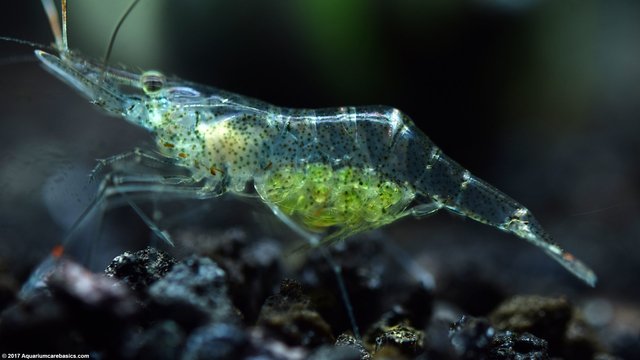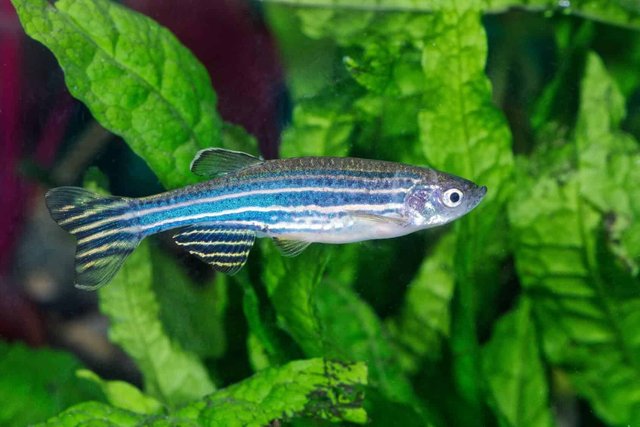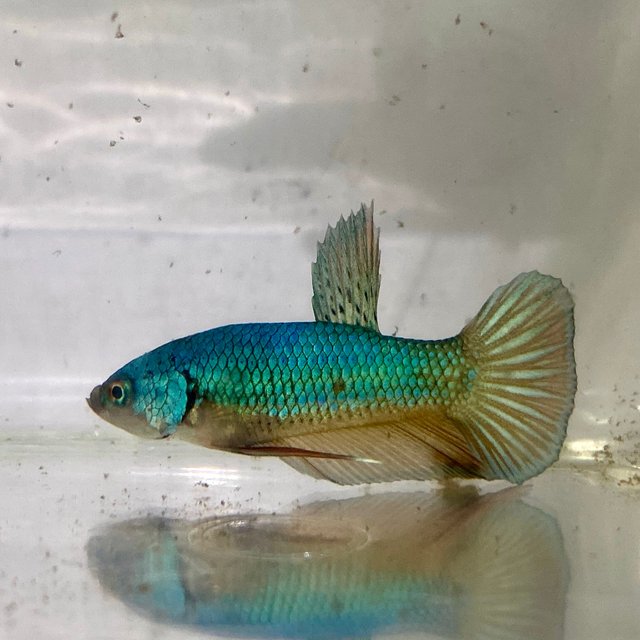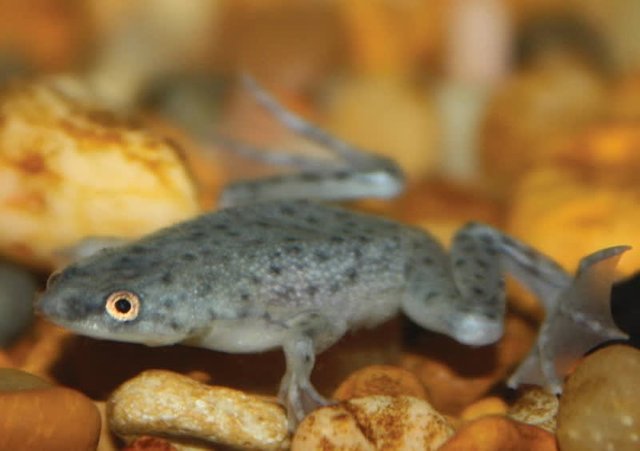This below is an invitation to an adventure. An exciting science project that we can do together.

A short intro
I am starting a breeding project to develop a line for one of the 'easy to keep' aquatic animals. I am happy to make it a community project and I invite you all to provide input on what would you like to see me do, which species to develop, overlook the process and generally, let's have fun with it together. If enough of you are interested, I'll start making videos documenting the process.
I've created mini-documentaries before on a variety of subjects, most recently in polish, a mini series on less known native north European freshwater aquatic species. Below is a highlight of one of the more gruesome episodes I recorded at home.
https://www.tiktok.com/@pan.akwariusz.prewetka/video/7124742951854427397
The plan is to:
- Select the species
- Do an in-depth research on that species, including diving deep in any available scientific papers, blogs, videos and other sources (this could make a fun video)
- If it's still a right fit, start thinking about traits - such as obvious visual traits, tolerance to different conditions, moving towards slightly different types of foods, specific life span, attitude, etc
- Prepare the breeding program
- Research and create the habitats that will favor for selected traits
- Iterate until results are satisfying or until feasibly possible
- Conclude and summarize
- If it was success name and release the new line into the market
If you want to get straight to the juicy details, skip the A little perspective... and go to This is the first post of a series. The research. section ;)
However, I'm pretty sure if you're a fellow naturalist, you can find all of this relatable.
A little perspective...
I've owned pets since I remember, throughout my life we've kept some more and less exotic animals at my home.
Personally I love animals and plants and all the life forms, I'm very much into biology, genetics and generally science, but zoology and nature have very special place in my heart.
Since I was a few years old I was fascinated by observing and studying wildlife, eventually at the age of 13 I was properly introduced to the subject by Gerard Durell's: The Amateur Naturalist. And to this day I'm running all kinds of projects including breeding, research, observation, creation of general and specialized habitats for a variety of species. In the last 10-12 years I worked mainly with aquatic and semi-aquatic fauna and flora. Eventually I started creating a full self-sustainable ecosystems with microbes, bacteria, fungi, small crustaceans, mollusks, worms, plants, and an occasional fish, which became one of my main interests. I'm not heavy on larger life forms - when you look a little bit closer, so much is happening in my tanks even if there are just a few extremely happy fish swimming here and there.
Currently I'm running an in-tank ecosystem project, that's a recreation of a slice of a natural biotope from a lake nearby and I think it's just amazing. I created it 6 months ago, since then - 0 water changes, 0 feeding, 0 cleaning. It's stable, clean, it thrives.
It's a kind of my specialty really. I've been doing and experimenting with full ecosystems since 2013 in Southwest London. Where I started my first ecosystem with samples gathered near Wimbledon park, in a surprisingly clean pond in the "middle of the city". The water was crystal, the bottom covered in periodically submerged plants. It was so abundant in life! I caught a few small aquatic organisms, got substrate samples with potential eggs and microflora and decorations and plants. There were even a bunch newt nymphs (of which I officially took none ^^).
And as part of my experiment I placed this recreated ecosystem outside in a container made of the inner part of a small fridge, covered by glass sheet in Southfields near my flat. I sometimes added a bit of water, but never done changes, yet it was always so healthy and clean all by itself. It stood like this for several months. The plans grew, there was no algae, it attracted insects and some of them managed to sneak in under the glass sheet and laid eggs. Mostly it was interesting, but I'm not too keen of mosquitoes so in the early summer I moved 3 of my platies there and I was able to completely forget about any mosquitoes. At that time I've had 9 running aquariums and breeders at home and it was a pretty busy time. When I remembered my 3 platies are left outside around December, I thought they must be long gone now. I didn't want to disturb the ecosystem throughout the cold months and I couldn't see much through the plants at the bottom to know they're dead for sure, but that seemed very reasonable considering low temperatures and the fact I didn't feed them, and so I let it be. Few months later, the next spring as the days started getting warmer, I went outside to my repurposed fridge to check on the ecosystem and to my surprise the platies were just there. Moving sleepily bathing in the sun, all three of them! This was a treat, I decided they're staying there permanently. Few months have passed and they spawned. Moreover feeding on the fry (unbeknownst to me) was a large dragonfly larvae :O. It was as large as a pinky when I discovered it (as I was searching for the cause of the missing young juveniles), I let it stay and I lifted the lid slightly to let it escape once it morphs, and one day it was just not there anymore.
The fish survived another winter in the fridge, the ecosystem thrived, eventually I left it to my housemate who also loved fish and I moved to Stratford. But I was hooked fevered. I continued making these ecosystems at different scales from fish tanks to pickle jars and every time it's as rewarding.
I also dabbled in selective breeding and in 2017 and 2018 had great success with Siamese fighter fish. Having an engineering background in science, I've spend several days researching and reading everything about it's genetics, mechanisms of inheritance, different layers of pigment in the skin, types of fins and ways in which crosses express, and so much more.
After all the research and after preparing the fish tanks, I went to the store, and knew exactly which traits I was looking for.
In bettas some traits will always dominate, and some will always be dominated. Having only traits that don't show easily allows simultaneously other 'shy' traits to show up.
For the Female - I was looking for as many most recessive traits as possible, paired with well shaped body and confident, curious character.
For the Male I also focused on keeping an eye on recessive traits and not allowing any highly dominant traits to sneak in, but at the same time, I was selecting profiled also towards specific traits I desired, such as high amounts of iridescent(complex inheritance based on multiple factors, including other layers of skin), light body color(recessive), no blue and red hues (most common, very dominant), short thick fins(recessive), very athletic shape.
I made sure to get a bit older fish as shows good genetics and lack of adulthood syndromes and deformations )such as overgrow of pigmented patches of skin, causing color 'spillage' to places where it shouldn't be).
I've considered so many factors that if I listed them out this would be an article about breading betta splendens and you can see a mere part of my compiled research here, on how different types are genetically related.
https://steemit.com/animals/@wellwild/betta-fish-variety-types-colors-and-patterns-full-chart
So there I was at the large betta section of Pets at Home in front of a large female tank. The females don't display as pronounced colors and traits as males and are often difficult to tell apart, they all seemingly looked like nothing special, almost identical to each other, but in fact a few in there were very slightly different, lacking some accents I've learned to be indicators of these dominant traits I wanted to avoid at all costs. For the males I want to the section with their bit older fish that are on sale. I found a gorgeous iridescent half moon veil tail male for 35 quid, down from 50 and took him home with two pale slightly iridescent girlfriends.
I crossed him twice first to one female and then to the second one and boy their spawns was some of the most beautiful bettas I've seen. It was far from being a line, as each fry looked very different, showing all the different hidden genetics that were in these parents. A few of the offspring managed to look semi-common in terms of fin shape and coloration, but large majority of these babies was a great really unique candidate to start a new line.
I was shocked by how good the result was and by the quality of the fish. I raised them into juveniles, totaling 24, kept them for a while and eventually after moving to Stratford and being able to only keep one large tank, I've given away all but one special fish with dark fins albino body and eyes and semi transparent azure iridescence. You can still find it on my Instagram profile (if you know me, it's private. But I can post here upon request). I parted my way with this fish when I was going for an Eurotrip in 2019 giving it away together with it's 200l tank.
Now, years later, I'm doing my ecosystems again and encouraged by these results, I thought, let's do a breeding project. Develop our own line, and document everything here. Perhaps a different species than betta splendens, but I'm open minded.
This is the first post of a series. The research.
Below you'll find the compilation of the species I consider to selectively breed and the relevant information I compiled about them.
I'm looking at the species that are easy and fast to breed with variety of traits to select from while making my own line.
This approach can possible exclude some of the more interesting species, but it's a research project and the chosen method is aimed at amplifying the effects of selective breeding, by being able to iterate through multiple generations quicker.
This is a copyright material and took several hours to make, so if you want to reuse it, please vote up and mention me in the attribution.
Name: Guppies (Poecilia reticulata)

Water requirements: Freshwater, temperature range of 18-30°C (64-86°F), pH range of 6-8, and a water hardness of 5-19 dGH.
Adult size: 2-4 cm (0.8-1.6 inches)
Lifespan: 2-3 years
Time until adulthood: 2-3 months
How often can reproduce: Guppies can breed continuously and females can carry several batches of fry at a time.
How many offspring are born: A female guppy can give birth to 20-100 fry per litter and can produce multiple litters per month.
**Additional information about available variety: Guppies have a wide variety of colors and patterns, making them a popular choice for selective breeding.
Information about its natural habitat: Guppies are native to South America and are found in freshwater streams and rivers.
Information about other wild closely related species that could be researched for potential crossbreeding: Closely related species include Poecilia wingei and Poecilia latipinna
Other notes: Guppies are a hardy species that are easy to breed and adapt well to different water conditions. They can be kept in a community tank with other peaceful fish and snails, and are suitable for beginners.
Name: Chinese Mystery Snail (Cipangopaludina chinensis)

Water requirements: Freshwater, temperature range of 15-30°C (59-86°F), pH range of 6.5-8, and a water hardness of 5-19 dGH.
Adult size: Up to 8cm (3 inches)
Lifespan: 2-3 years
Time until adulthood: 6-12 months
How often can reproduce: Chinese Mystery Snails can breed continuously and can produce multiple clutches of eggs per year.
How many offspring are born: A female Chinese Mystery Snail can produce up to 1000 eggs per clutch.
Additional information about available variety: Chinese Mystery Snails come in a variety of colors, including yellow, brown, green, and black.
Information about its natural habitat: Chinese Mystery Snails are native to Asia and are found in freshwater rivers, lakes, and ponds.
Information about other wild closely related species that could be researched for potential crossbreeding: Closely related species include Viviparus viviparus and Viviparus malleatus.
Other notes: Chinese Mystery Snails are hardy and adapt well to different water conditions. They are known for their fast reproduction rate and are relatively easy to breed in captivity. They are also known to consume a variety of food items including algae, detritus, and aquatic plants.
Name: African Dwarf Frog (Hymenochirus sp.)
Water requirements: Freshwater, temperature range of 20-26°C (68-79°F), pH range of 6.5-8, and a water hardness of 5-19 dGH.
Adult size: Up to 7cm (2.8 inches)
Lifespan: 2-4 years
Time until adulthood: 2-4 months
How often can reproduce: African Dwarf Frogs can breed continuously and can produce multiple clutches of eggs per year.
How many offspring are born: A female African Dwarf Frog can produce up to 50 eggs per clutch.
Additional information about available variety: African Dwarf Frogs come in a variety of colors and patterns, making them a popular choice for selective breeding.
Information about its natural habitat: African Dwarf Frogs are native to Central and West Africa, found in freshwater rivers, streams and ponds.
Information about other wild closely related species that could be researched for potential crossbreeding: Closely related species include Hymenochirus boettgeri, Hymenochirus curtipes
Other notes: African Dwarf Frogs are hardy and adapt well to different water conditions. They are known for their fast reproduction rate and are relatively easy to breed in captivity. They are also known to consume a variety of food items including algae, detritus, and aquatic plants. They are known to be peaceful and good for community tanks.
Name: Ghost shrimp (Palaemonetes sp.)

Water requirements: Freshwater, temperature range of 18-30°C (64-86°F), pH range of 6.5-8, and a water hardness of 5-19 dGH.
Adult size: Up to 5cm (2 inches)
Lifespan: 1-2 years
Time until adulthood: 2-3 months
How often can reproduce: Ghost shrimp can breed continuously and can produce multiple clutches of eggs per year.
How many offspring are born: A female Ghost shrimp can produce up to 100 eggs per clutch.
Additional information about available variety: Ghost shrimps come in a variety of colors and patterns, making them a popular choice for selective breeding.
Information about its natural habitat: Ghost shrimps are found in freshwater rivers, streams and ponds across North America.
Information about other wild closely related species that could be researched for potential crossbreeding: Closely related species include Macrobrachium sp.
Other notes: Ghost shrimps are hardy and adapt well to different water conditions. They are known for their fast reproduction rate and are relatively easy to breed in captivity. They are also known to consume a variety of food items including algae, detritus, and aquatic plants. Ghost shrimps are known to be peaceful and good for community tanks.
Name: Neon Tetra (Paracheirodon innesi)
:max_bytes(150000):strip_icc()/neon-tetra-paracheirodon-1381835-hero-2cc17d27c90d4215bfe4deeeab03e0a5.jpg)
Water requirements: Freshwater, temperature range of 22-28°C (71-82°F), pH range of 6.0-7.5, and a water hardness of 2-12 dGH.
Adult size: Up to 3.5cm (1.4 inches)
Lifespan: 2-3 years
Time until adulthood: 2-3 months
How often can reproduce: Neon Tetras can breed continuously and can produce multiple clutches of eggs per year.
How many offspring are born: A female Neon Tetra can produce up to 150 eggs per clutch.
Additional information about available variety: Neon Tetras are known for their bright neon coloration, making them a popular choice for selective breeding.
Information about its natural habitat: Neon Tetras are native to the tributaries of the Amazon River in South America.
Information about other wild closely related species that could be researched for potential crossbreeding: Closely related species include Paracheirodon simulans and Paracheirodon axelrodi.
Other notes: Neon Tetras are hardy and adapt well to different water conditions. They are known for their fast reproduction rate and are relatively easy to breed in captivity. They are also known to consume a variety of food items including algae, detritus, and aquatic plants. Neon Tetras are known to be peaceful and good for community tanks.
Name: Zebra Danio (Danio rerio)

Water requirements: Freshwater, temperature range of 15-26°C (59-79°F), pH range of 6.5-7.5, and a water hardness of 5-19 dGH.
Adult size: Up to 5 cm (2 inches)
Lifespan: 2-3 years
Time until adulthood: 3-4 months
How often can reproduce: Zebra Danios can breed continuously and can produce multiple clutches of eggs per year.
How many offspring are born: A female Zebra Danio can produce up to 500 eggs per clutch.
**Additional information about available variety: Zebra Danios come in a variety of colors and patterns, making them a popular choice for selective breeding.
Information about its natural habitat: Zebra Danios are native to the rivers and streams of India and Bangladesh.
Information about other wild closely related species that could be researched for potential crossbreeding: Closely related species include Danio albolineatus and Danio choprae.
Other notes: Zebra Danios are hardy and adapt well to different water conditions. They are known for their fast reproduction rate and are relatively easy to breed in captivity. They are also known to consume a variety of food items including algae, detritus, and aquatic plants. Zebra Danios are known to be active and good for community tanks.
Name: Siamese Fighting Fish (Betta splendens)

Water requirements: Freshwater, temperature range of 25-30°C (77-86°F), pH range of 6.0-7.5, and a water hardness of 2-10 dGH.
Adult size: Up to 7 cm (2.8 inches)
Lifespan: 2-3 years
Time until adulthood: 4-6 months
How often can reproduce: Siamese Fighting Fish can breed continuously and can produce multiple clutches of eggs per year.
How many offspring are born: A female Siamese Fighting Fish can produce up to 100 eggs per clutch.
Additional information about available variety: Siamese Fighting Fish come in a variety of colors, patterns, and fin types, making them a popular choice for selective breeding.
Information about its natural habitat: Siamese Fighting Fish are native to the rice paddies and canals of Thailand, Malaysia, and Indonesia.
Information about other wild closely related species that could be researched for potential crossbreeding: Closely related species include Betta imbellis and Betta mahachaiensis.
Other notes: Siamese Fighting Fish are territorial and should be kept in individual tanks or with only one male per tank. They are known for their aggressive behavior and should not be kept with other aggressive fish. They are known for their fast reproduction rate and are relatively easy to breed in captivity. They are also known to consume a variety of food items including algae, detritus, and aquatic plants. Siamese Fighting Fish are known to be aggressive and not suitable for community tanks.
Few words before I'm gone to do more work
Make sure to let me know if you spot any errors, there were a number of sources and places I had to go through to piece this information together.
Let's consider if we want to go for one of these species, or something different altogether.
Let's consider what we need to consider.
Suggestions from comments will be considered in future edits.
I have an ability to do it, all the conditions and the necessary funds. We can create something new. :))

You've got a free upvote from witness fuli.
Peace & Love!
Downvoting a post can decrease pending rewards and make it less visible. Common reasons:
Submit
Thanks @fuli :) I'm glad you're enjoying this project
Downvoting a post can decrease pending rewards and make it less visible. Common reasons:
Submit